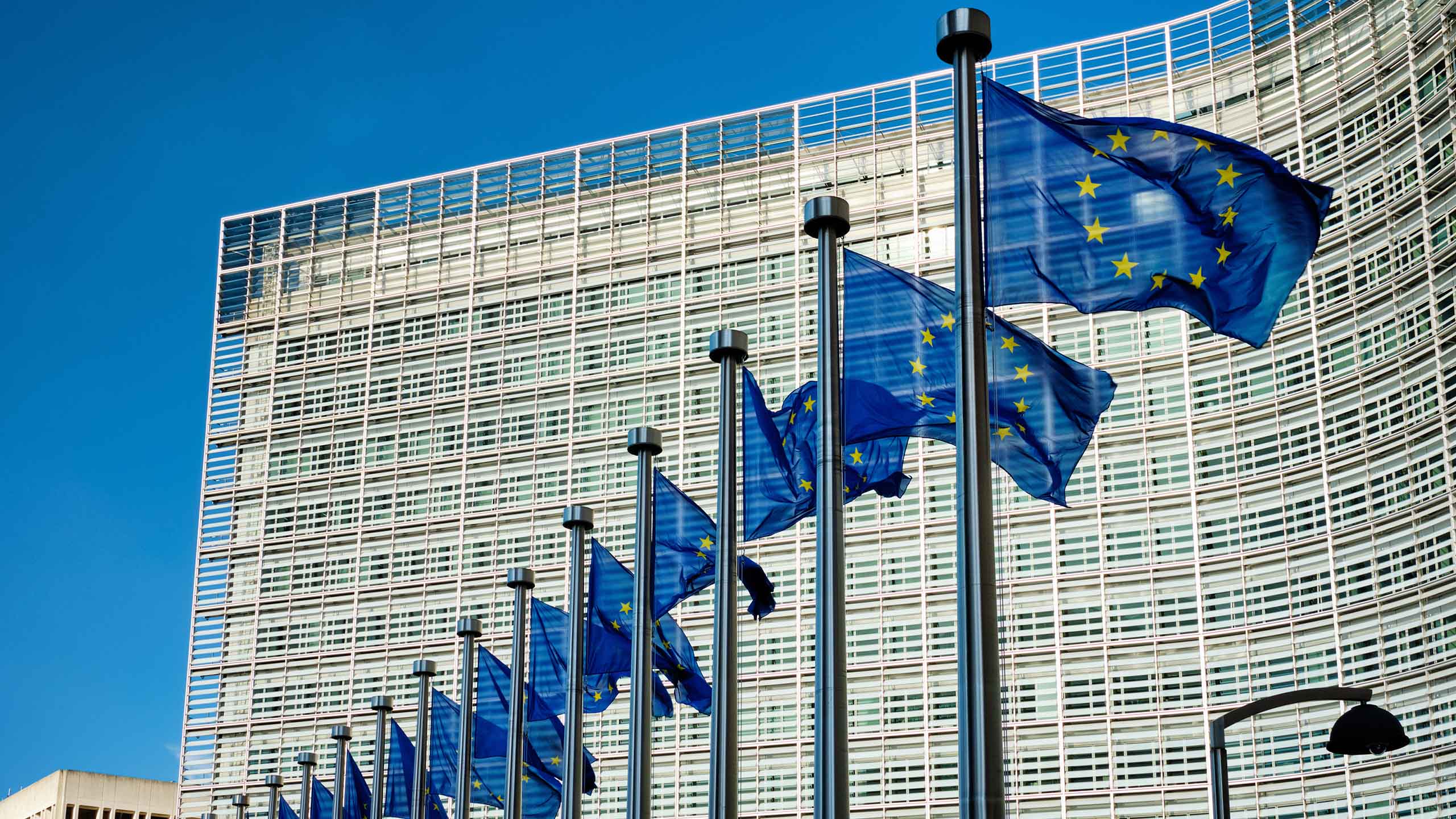The week that was …
Economic round-up
UK economic weakness
The UK economy shrank unexpectedly in January, falling back 0.1%. Economists had forecast an expansion in GDP of 0.1%. The weakness was driven mainly by a decline in the manufacturing sector. Read more from the BBC here
Tesla warns on tariffs
An unsigned letter from Elon Musk’s Tesla warned the US administration its trade war was exposing the electric carmaker to retaliatory tariffs and inflating costs. The group said it “supports fair trade” but added the US administration should ensure it did not “inadvertently harm US companies”. Read more from the Guardian here
US inflation
Inflationary pressures in the US moderated in February, with prices showing a 2.8% rise, year on year. Inflation had been expected to fall to 2.9% from 3.0% in January. Economists, however, still fear an inflationary impact from tariffs. Read more from the CNBC here
China targets Canada
China announced plans to impose a 100% tariff on Canadian rapeseed oil, oil cakes and peas. It also said a 25% levy would be placed on aquatic products and pork from Canada. The measures appear to be a response to Canada’s imposition of 100% import tariffs on Chinese-made EVs in October last year. Read more from the CNBC here
US consumers wobble
US consumer sentiment plunged to its lowest level in 2.5 years in March amid concerns on the impact of President Donald Trump’s sweeping tariffs on the domestic economy. The report from the University of Michigan Surveys of Consumers noted “frequent gyrations in economic policies make it very difficult for consumers to plan for the future”. Read more from Reuters here
Markets round-up
UK bond yields edge higher
A rise in UK bond yields has intensified pressure on the UK chancellor ahead of the Spring Statement on 26 March. Analysts at Capital Economics said Rachel Reeves was on track to miss her key fiscal target by a margin of £1.6bn. Read more from the FT here
Gold hits new highs
The price of gold tipped over $3,000 (£2,315) per ounce amid economic uncertainty created by Donald Trump’s global trade war. The gold price has risen 14% since the start of 2025 as it cements its position as a safe haven for investors. Read more from the BBC here
Volatility on the rise
The Vix – an indicator of investor expectations of volatility in the S&P index – has risen sharply since mid-February. Single-stock volatility, as a function of idiosyncratic risk, is steadily trending higher relative to index volatility. Read more from the FT here
“Global markets’ concentration on the US - and on mega-cap technology stocks in particular - had started to look, at best, unimaginative; at worst, extremely risky.
Selected equity and bond markets: 07/03/25 to 14/03/25
| Market | 07/03/25 (Close) |
14/03/25 (Close) |
Gain/loss |
|---|---|---|---|
| FTSE All-Share | 4688 | 4662 | -0.60% |
| S&P500 | 5770 | 5639 | -2.30% |
| MSCI World | 3740.4 | 3666.0 | -2.00% |
| CNBC Magnificent Seven | 305.2 | 297.5 | -2.50% |
| US 10-year treasury (yield) | 4.30% | 4.32% | |
| UK 10-year gilt (yield) | 4.6% | 4.67% |
Investment round-up
Jupiter European team departs
Jupiter Asset Management is closing its Europe ex UK equity fund after it failed to attract significant assets. European equity managers Mark Heslop and Mark Nichols are leaving the firm.
New hires at CCLA
CCLA Investment Management has strengthened its investment team with a raft of new hires from Ruffer, JO Hambro and 7IM. Ruffer director Ajay Johal joins the firm as a client investment director from Ruffer, where he oversaw the firm’s UK charity offering.
Changes on Abrdn Asian Income
Isaac Thong will join Eric Chang as lead manager on the Abrdn Asian Income fund following Yoojeong Oh’s departure from Aberdeen. Thong joins from JP Morgan Asset Management, where he co-managed the JP Morgan Global Emerging Markets Income trust and the open-ended JP Morgan Emerging Markets Income fund. Oh managed Abrdn Asian Income for more than a decade.
Investor sentiment revives
UK investors were more positive in February, according to Calastone data, but still shunned their domestic market. They added a net £1.09bn to their equity-fund holdings during the month, but UK-focused funds saw accelerating outflows with £1.22bn leaving the sector, the sixth-worst month on record. Read more from Calastone here
… and the week that will be
UK and US rate decisions
Consensus expectations are that neither the Bank of England nor the US Federal Reserve is expected to cut interest rates in the week ahead, although weakening economic data in both countries may give the central banks pause for thought. Inflation remains elevated, but the most recent data in the US shows a fall. Read more from Reuters here
Weakening US consumer?
US retail sales should offer an insight into the health of the US consumer. Having propped up growth in the US economy, there are signs that higher inflation, concerns over tariffs and a slowdown in the US economy are denting confidence. Markets are likely to be watching closely. Read more from McKinsey here and from Reuters here
The week in numbers
UK rate decision: The market expects the Bank of England to hold rates at 4.5%.
UK employment data: Consensus expectations are for the January unemployment rate to hold steady at 4.4%.
US rate decision: The market expects no change in rates from the Federal Reserve, but investors will be watching the commentary closely.
US retail sales: Consensus expectations are for retail sales to rise 0.5%, month on month, from -0.9% in January.
US initial jobless claims: Consensus expectations are that claims will tick up to 225,000.
German ZEW index (March): Consensus expectations are for the country’s economic sentiment index to rise to 32 from 26.
Eurozone consumer confidence (March, flash): Consensus expectations are for the index to fall to -14 from -13.6.
Company news: Full-year earnings reports expected from Prudential, Travis Perkins and Wickes. Read more from IG here
In focus: European revival
Economists with an eye for a catchy headline have started to suggest ‘Make America Great Again’ might actually ‘Make Europe Great Again’. By encouraging Europe to stand on its own two feet, revive its defence industry and remove its fiscal restraints, the Trump administration could unleash growth in a continent that has become mired in stagnation and political sclerosis. Asset allocators are starting to take notice.
At first glance, it is difficult to make a compelling investment case for Europe, which has been subject to a raft of new tariffs, imposed by the US administration. It may need to stump up greater financing for a costly war with belligerent neighbour Russia, heaping additional debt on already-indebted nations. And its economic growth has been unexciting at best while many governments are facing a significant challenge from the hard right.
The shift, however, may not lie in the problems – which are myriad – but in the continent’s response. In early March, European leaders agreed to a massive increase to defence spending. The package proposed by the European Commission would be worth €800bn (£673bn), which would include a €150bn loan secured against unused funds in the EU budget. The Commission said it would also create greater flexibility in the EU’s fiscal rules to unlock the remaining €650bn.
The rolling back of the German debt break is also significant. Friedrich Merz, who is expected to be Germany’s next chancellor, has said he would relax the country’s restrictive fiscal rules to unleash €500bn in defence and infrastructure spending. This could help revive Germany’s manufacturing sector and generate economic momentum. “There are real developments happening in Europe,” says Ian Rees, head of multi-asset at Premier Miton.
“There are changes to the fiscal approach, kick-started by Trump saying they have to fend for themselves. This is very good. The European Commission has now said that European countries can do defence spending outside their national budgets.”
The real difference, he believes, is the German package, adding: “Incoming chancellor Merz has taken the initiative and said, We can see the economy and infrastructure are in a mess, but we haven’t been doing anything because of the fiscal constraints. While the figures vary, an injection of €50bn each year for 10 years would add as much as 1% annually to GDP.”
While it will take time to work through the system, the market is a discounting mechanism, says Rees, and is thus likely to reward these initiatives ahead of time. “It is a game-changer in the outlook for Europe. It has been seen as the sick dog, with low growth, but we think it will reverse momentum,” he concludes – and his team will be are upping their weighting to Europe in response.
Europe appears to be at a positive inflection point in terms of government spending, as their hand is forced by a perceived change in the transatlantic alliance.”
Rob Burdett, head of multi-manager at Nedgroup Investments, is also increasing his European weighting, as part of a more value-oriented approach that also includes a higher allocation to the UK. “This year, we have further increased our European positioning by adding to the Eurostoxx 600 index,” he says. “Our switch from the US to Europe has been well-timed so far, benefitting from the European rally and mitigating losses in the US.”
Europe has been showing “positive signs”, Burdett continues, elaborating: “Key developments include the potential resolution of the Russia/Ukraine conflict, interest rate cuts to support growth, increased fiscal spending in Germany following the election, and a positive earnings season that exceeded expectations.
“With Europe looking relatively undervalued, it is become an attractive area for investment – particularly as it remains underrepresented in many portfolios. Since the announcement of defence and infrastructure spending by Germany’s incoming chancellor, coupled with the European Commission’s defence-funding loan scheme, Europe has seen a significant outperformance relative to the US.”
While it is still early days to be calling a shift in the momentum for European equities, stockmarkets appear ready for a change. Global markets’ concentration on the US, and on mega-cap technology stocks in particular, had started to look, at best, unimaginative – at worst, extremely risky.
As Anthony Willis, investment manager at Columbia Threadneedle, says: “Europe appears to be at a positive inflection point in terms of government spending, as their hand is forced by a perceived change in the transatlantic alliance.”
It would not take significant reallocation from the US market into Europe to shift European markets. To put things into perspective with a couple of examples, the capitalisation of the entire French market, at $3.38tn, is approximately 1.5 x Apple, while the Frankfurt Stock Exchange is smaller than Microsoft.
There is also plenty of M&A activity in Europe, notably within the banking and insurance sectors. Particularly encouraging is the return of cross-border deals – for instance, between UniCredit and Commerzbank. The insurance sector has also been an active area for deals, including AXA IM and BNP Cardif, and Banco BPM Vita and Anima.
There are still significant problems for Europe, of course. Economic growth has been slow and any revival will not occur overnight. Nor have tariff concerns gone away as Europe remains involved in a tit-for-tat trade war with the US. After the US imposed a 25% tariff on steel and aluminium on Europe, the region said it would charge punitive levies on €8bn ($9bn) of American imports from 1 April and on a further €18bn of imports from mid-April.
One final observation – the investment industry has some predictable trends, including a familiar habit of a spate of fund closures just ahead of a revival for an asset class. With this in mind, the closure of Jupiter’s sub-scale Pan European Smaller Companies fund could be a contrarian indicator for the European equities sector.
The Eurostoxx 50 index has actually outpaced the S&P 500 by around 14.5% over the year to date (10.4% versus -4.1%) so the turning point for European equities may already have started,. Still after a long run of underperformance, it should still have further to run.

In focus: Active role
With the idea of ‘US exceptionalism’ appearing to gradually unwind, investors may be starting to reexamine the balance of active and passive in their portfolios. While by no means exclusive to passive, of course, the high weighting in US equities and a handful of technology stocks is a feature of many passive portfolios. It has served investors extremely well, but may now need a rethink.
The latest Morningstar Active/Passive barometer reveals the extent of passive outperformance over the past decade – with the average success rate for active equity managers in the group of categories analysed a grim 14.2%. Active managers have fared marginally better over the past year, though – over the 38 equity categories examined, the success rate stood at 29.1% as of December 2024, up very slightly from 28.7% in December 2023.
As might be expected, the report also showed active managers tended to achieve higher success rates within mid-cap and small-cap equity categories. Additionally, active managers are more likely to succeed in equity categories where the average passive counterpart exhibits a structural bias toward a particular economic sector or is concentrated on a few individual names. This looks very much like the US markets today.
With this in mind, the growing dispersion of returns in markets may challenge the dominance of passive in 2025. Passive managers may retort that one year in 10 hardly makes the argument for active management. For their part, active managers could argue the past decade has been an anomaly, characterised by low interest rates.
This flattered large-cap growth companies and drained capital from elsewhere. We are now perhaps in a more ‘normal’ environment, with interest rates at higher levels, which is therefore likely to reward a more ‘normal’ investment approach.
The concentration in US equity markets – and in the technology sector in particular – would seem to fly in the face of good investment practice. Trouble is, for much of the past decade, investors have not been rewarded for being diversified, which has left active managers at a significant disadvantage. Active managers ought now to be in a better position to manage the rotation in markets.
The Morningstar Barometer shows active managers have enjoyed better performance in the bond markets. The average one-year success rate for active bond managers across the 21 categories analysed stood at 53.5% in December 2024, up from 46.5% a year earlier. This may partly be because fees are lower in active bond funds, but also because passive bond funds tend to overweight the most indebted companies.










